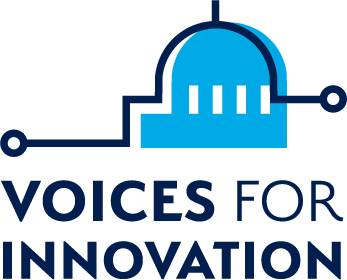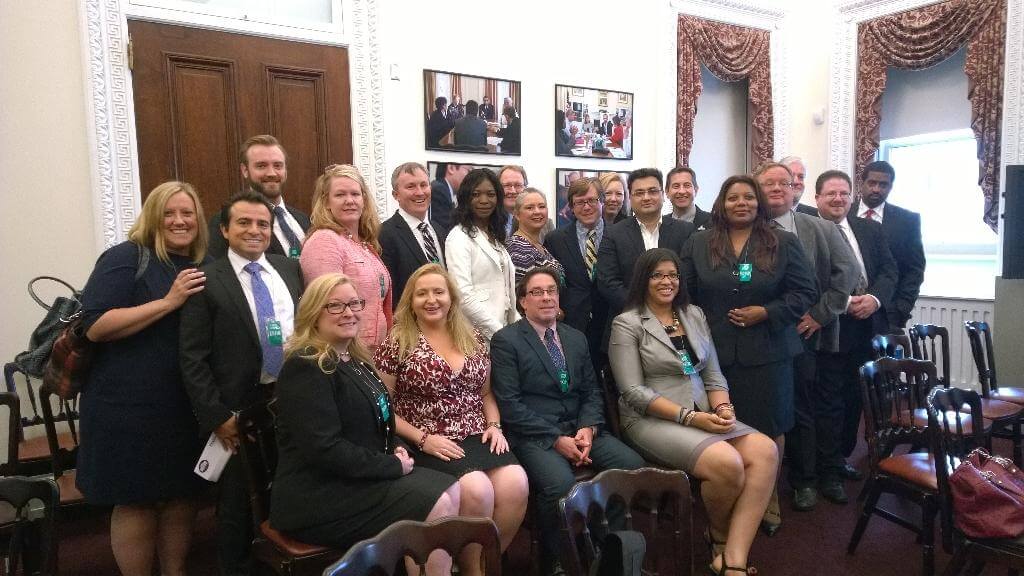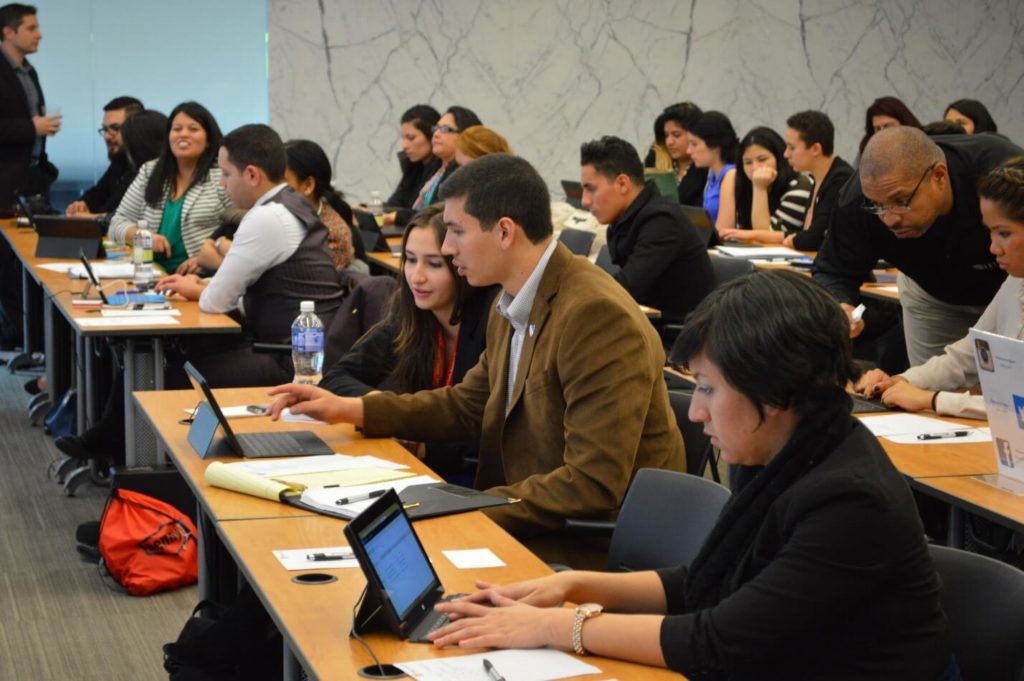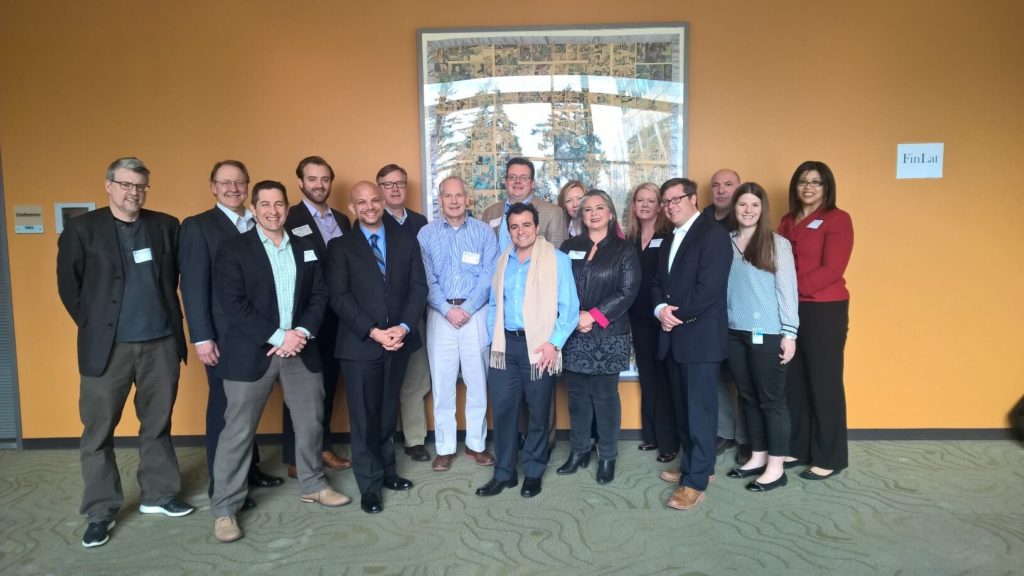Editor’s Note: VFI leader Bill Hole recently organized a delegation of STEM-focused educators on a visit to the Microsoft campus. Bill provides highlights below.
On August 8, with the help of Voices for Innovation, I had the opportunity to bring a group of educators from California and Washington to Microsoft’s campus in Redmond for a day of tours and briefings. It was a fun, eye-opening experience for all of us.
My aim was to give educators a chance to hear from top-notch tech professionals, learn more about tech careers, and see where the technology sector is headed. By the end of the day, I wanted teachers to have new perspectives to help them guide students on their paths to learning computer science and pursuing careers in technology.
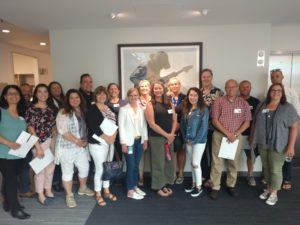
The day kicked off visiting facilities where Microsoft manages its global cloud computing infrastructure and fights cybercrime. These experiences offered the educators a look at emerging technology careers that required skills beyond traditional computer science. We felt like we were seeing the very cutting edge of computer science in action.
Next up, the group got a chance to go behind-the-scenes with a tour of Microsoft Research. During the visit, educators learned about the different science disciplines that go into product creation. We also heard about the importance of teamwork and collaboration in the design process. After an action-packed morning, the educators were briefed by a number of Microsoft specialists.
Diving into Microsoft Educational Programs
Over lunch, we heard from Miri Rodriguez, a dynamic Microsoft veteran who now heads up the company’s internship programs. We learned that there are especially strong opportunities for high school students in western Washington. Microsoft runs a 10-week summer internship program for high school students, as well as a boot camp.
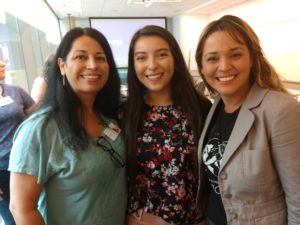
For first and second-year college students from across the country, Microsoft offers intensive 12-week internships through the Explore Microsoft program. Our group learned how students can position themselves for this opportunity, beginning with K-12 education.
Miri is also a marketing and storytelling guru, and she shared some great ideas for how educators can become stronger advocates and communicate more effectively with students, parents, colleagues, and the broader public.
Next up, Ed Britan, head of global privacy policy and counsel at Microsoft, delivered an insightful briefing on the challenges of defining a Global Privacy Policy. Microsoft is playing a leading role in developing artificial intelligence (AI) and facial recognition technology, and the company recognizes that these areas of innovation need a robust legal and regulatory framework. For teachers, these technologies can help advance education and school safety, but student privacy must be protected as well.
We ended the day hearing about Microsoft’s TEALS (Technology Education and Literacy in Schools) program, which pairs up teachers with tech sector volunteers to teach high school computer science courses. This is a fantastic program—and I encourage computer science professionals to volunteer.
Overall, the day was a great success. Holly Urness, Instructional Coach for Secondary Science in the Lake Stevens School District, said, “The feedback from the teachers was excellent. They had many shifts in their understanding of what the tech industry in general, and Microsoft in particular, is all about. In the end, doors will be opened for students as they hear about a wider world with more possibilities than they have previously imagined.”
How Microsoft Partners Can Help
Microsoft partners have many opportunities to get involved in connecting the dots between our world and K-12 education. We also have to go out there and create opportunities.
In my case, I’ve gone to countless meetings to speak up for computer science education, and now I serve on my local school district’s Career and Technical Education (CTE) committee. I also collaborated with local tech educators to organize a Regional STEM Summit last summer. I know that many other Voices for Innovation members have worked in their communities to advance STEM and computer science education as well.
We also need to be vocal advocates for dedicated funding and public policies that support computer science education. All students should have an opportunity to learn computer science during their K-12 years. By helping the schools and local officials better understand the direction technology is going, Voices for Innovation members can help build stronger communities to empower the careers and workers of tomorrow.
***
Bill Hole is a member of VFI’s Advisory Task Force and a long-time advocate for computer science and STEM education. He is president of US Licensing Group, which specializes in volume licensing of Microsoft products and services.
